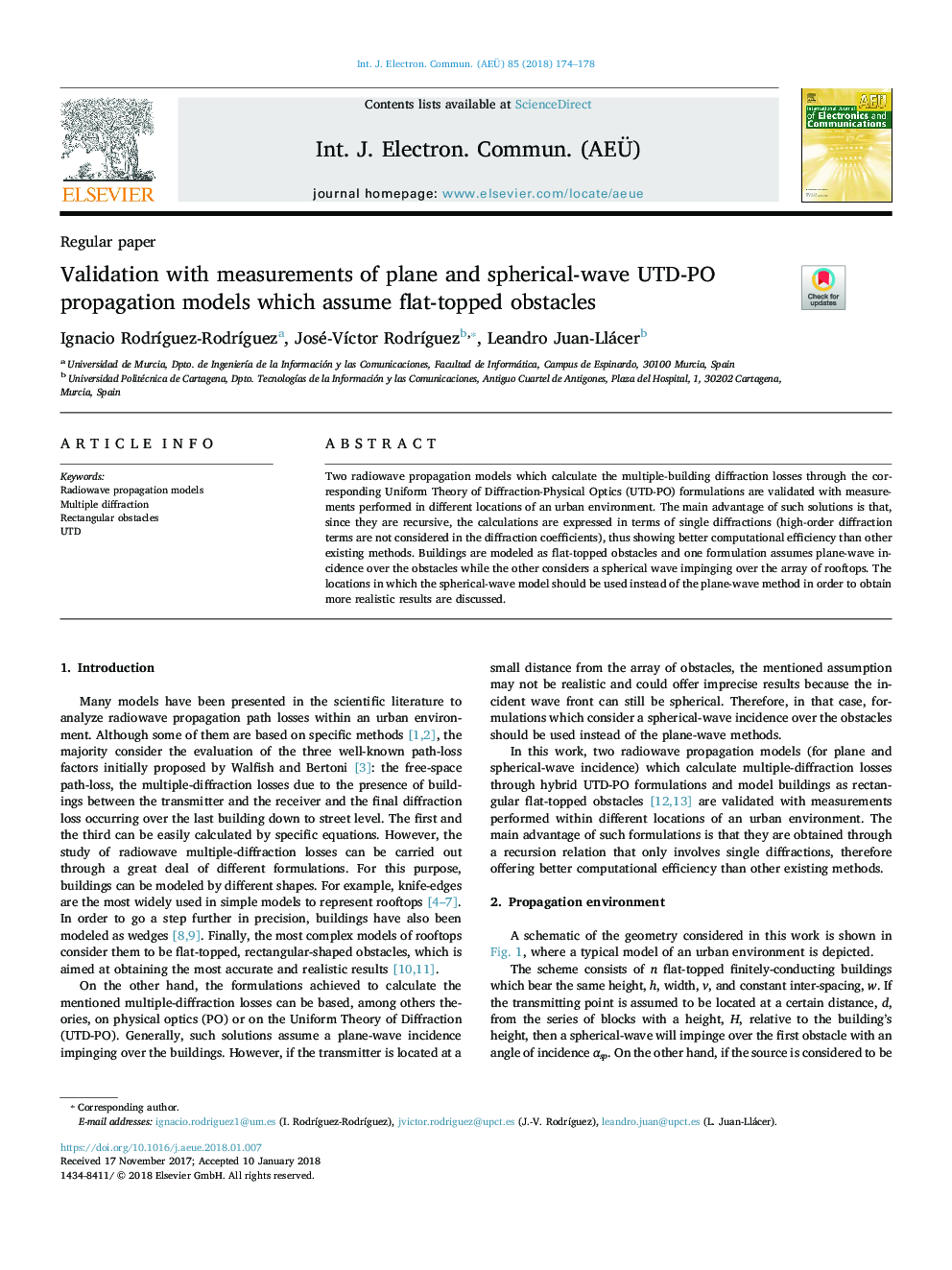| Article ID | Journal | Published Year | Pages | File Type |
|---|---|---|---|---|
| 6879525 | AEU - International Journal of Electronics and Communications | 2018 | 5 Pages |
Abstract
Two radiowave propagation models which calculate the multiple-building diffraction losses through the corresponding Uniform Theory of Diffraction-Physical Optics (UTD-PO) formulations are validated with measurements performed in different locations of an urban environment. The main advantage of such solutions is that, since they are recursive, the calculations are expressed in terms of single diffractions (high-order diffraction terms are not considered in the diffraction coefficients), thus showing better computational efficiency than other existing methods. Buildings are modeled as flat-topped obstacles and one formulation assumes plane-wave incidence over the obstacles while the other considers a spherical wave impinging over the array of rooftops. The locations in which the spherical-wave model should be used instead of the plane-wave method in order to obtain more realistic results are discussed.
Keywords
Related Topics
Physical Sciences and Engineering
Computer Science
Computer Networks and Communications
Authors
Ignacio RodrÃguez-RodrÃguez, José-VÃctor RodrÃguez, Leandro Juan-Llácer,
